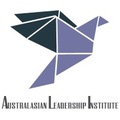How To Identify A Leadership Dinosaur
How To Identify A Leadership Dinosaur?
By Mark Wager
In today’s fast-paced workplace, leaders come in all forms, with some leaving a profound and positive impact on their teams. These leaders inspire, motivate, and create environments where employees thrive. Unfortunately, not all leaders fit this mould. Some cling to outdated practices that may have worked in the past but are no longer effective in today’s dynamic landscape. These leaders, instead of empowering their teams, attempt to control them; instead of motivating, they demoralise; and rather than solving problems, they often create more for everyone around them. These individuals are what I call “Leadership Dinosaurs.” Their inability to evolve with the changing demands of modern leadership holds their teams and organisations back. In this article, we’ll explore how to identify Leadership Dinosaurs and what steps can be taken to handle them effectively.
The Rise and Fall of the Dinosaurs
Over 65 million years ago, dinosaurs roamed the Earth, dominating life. Early mammals, though much smaller, struggled to survive in a world ruled by these massive creatures. Yet, while dinosaurs eventually went extinct, mammals thrived and went on to become the dominant species. The reason? Adaptability. Dinosaurs, despite their size and strength, failed to evolve in response to changing environmental conditions, while mammals adapted and survived.
This story offers a striking parallel to leadership in today’s world. The most successful leaders are those who can evolve and adapt to new challenges, technologies, and workforce expectations. They recognise the need for continuous learning, flexibility, and openness to new ideas. Leadership Dinosaurs, however, remain rooted in the past, clinging to methods that no longer work. Their inability to adapt spells doom not just for themselves, but often for their teams and organisations as well.
Recognising a Leadership Dinosaur
1. Living in the Past
One of the most common characteristics of Leadership Dinosaurs is their tendency to romanticise the past. These are leaders who may have experienced a level of success earlier in their careers, but their progression has since stalled. Rather than reflect on what might have caused this stagnation, they often point fingers at external factors, such as younger, more dynamic colleagues. Emotional intelligence—the ability to be aware of, control, and express emotions—is sorely lacking in these individuals. Instead of seeing the value in new ideas, they resist them, believing that the methods they employed in the past are sufficient for today. They might even discourage innovation, insisting that “if it’s not broken, don’t fix it,” unaware that change is inevitable and necessary for growth.
The problem here is twofold: not only are these leaders stuck in the past, but their behaviour also impacts the motivation and creativity of their teams. Employees who want to bring fresh ideas to the table are often met with resistance, leading to frustration and disengagement. Over time, this can severely limit an organisation’s ability to innovate and stay competitive.
2. The Myth That Leaders Are Born, Not Made
This belief harks back to an antiquated notion from the 19th century when psychologist Francis Galton suggested in his book Hereditary Genius that leadership was a trait passed down through generations. Galton’s ideas gave rise to the belief that great leaders are born with inherent qualities that set them apart. While this idea persisted for a long time, we now understand that leadership is a skill set—one that can be learned, developed, and refined over time.
Yet, Leadership Dinosaurs continue to perpetuate this myth. They believe their past achievements are proof of innate leadership abilities, and as a result, they see no need for self-improvement. In reality, leadership requires a commitment to ongoing personal and professional development. Today’s leaders must be adaptable, lifelong learners who seek out feedback, invest in their teams, and continuously work on their own skills. When a leader stops learning, they stop leading effectively.
3. Overconfidence Without Self-Awareness
A significant indicator of a Leadership Dinosaur is overconfidence paired with a lack of self-awareness. Emotional intelligence is crucial for modern leaders. It helps them understand their own strengths and weaknesses and how their actions affect those around them. Leadership Dinosaurs, however, often overcompensate for their insecurities with arrogance. They brag about past successes, even when they’re irrelevant to the current conversation. They’re quick to take credit for others’ work and are hesitant to acknowledge the contributions of their team members.
This behaviour creates a toxic work environment, where team members feel undervalued and unsupported. In the long run, this damages team cohesion and morale, leading to disengagement and high turnover. Effective leaders know that recognising and empowering the contributions of their team members is not a threat to their authority—it’s a sign of true leadership.
4. Valuing Strength Over Humility
Humility is a trait often overlooked in leadership, but it’s one of the most valuable qualities a leader can possess. True leadership is about service—lifting others up, empowering them to reach their potential, and putting the needs of the team ahead of personal desires. Leadership Dinosaurs, however, view humility as a weakness. They equate leadership with authority and believe that showing vulnerability or admitting mistakes will undermine their credibility.
This couldn’t be further from the truth. Humility allows leaders to build trust, foster open communication, and create an environment where people feel safe to share ideas and challenge the status quo. Leaders who are humble are also more likely to acknowledge their own limitations and seek help when needed, which ultimately strengthens the organisation.
5. The Workplace Bully
If left unchecked, Leadership Dinosaurs can easily transform into workplace bullies. As their leadership style becomes increasingly ineffective, they may lash out, becoming more controlling and authoritarian. Their frustration with their inability to lead in a modern context often translates into hostility toward their team. They justify their actions by labelling their employees as “too soft” or “unwilling to work hard,” all the while ignoring the fact that their own behaviour is driving disengagement and turnover.
Eventually, talented employees will begin to leave, and those who remain may become disengaged, doing only the bare minimum to get by. This is a dangerous scenario for any organisation. Losing key talent and fostering a toxic work culture can take years to undo, and by the time the damage is apparent, it may already be too late.
Dealing with a Leadership Dinosaur
If you’ve recognised any of these traits in a leader within your organisation, it’s time to act. The first step is to assess whether this individual is worth the investment. Do they possess technical skills or institutional knowledge that make them valuable despite their outdated leadership style? If so, intensive one-on-one coaching may be the answer. Leadership Dinosaurs are unlikely to respond to traditional training workshops, as they often believe the problem lies with everyone else. Coaching that focuses on developing self-awareness, emotional intelligence, and modern leadership techniques can help them evolve into more effective leaders.
However, if coaching and development don’t work, it may be time to make the difficult decision to part ways. In the business world, as in nature, those who fail to adapt will ultimately face extinction. Don’t let outdated leadership hold your organisation back from achieving its full potential.
If you’re ready to transform leadership in your organisation, I can help. With over 30 years of experience in leadership coaching, I specialise in guiding organisations through leadership transitions and helping individuals unlock their full potential. Contact me today to discuss how we can work together to create leaders who inspire, motivate, and drive success.
Posted: Monday 23 September 2024

